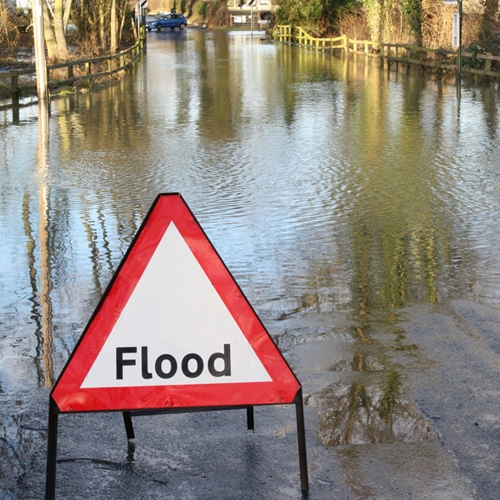Disastrous floods recently hit Colorado, wiping out roads and other infrastructure, taking out cellphone service and parts of the power grid and disrupting business operations across the state. Colorado is one of the top markets nationally for WiredRE, with total colocation and data center demand of approximately 40 MW per year. We’ve been observing the reporting on the effects of the disaster, documenting statistics from sources like CNN, the Denver Post and USA Today to paint a clear picture of not only the current damage but also the path that lies ahead in regard to disaster recovery. Many organizations use Colorado colocation and data centers for DR, and the impact of flooding this year, as well as forest fires last summery, may influence purchasing behavior nationally.
Sources are calling Colorado’s rainfall and resulting flooding “biblical,” observing that a disaster of this magnitude only occurs once every 1,000 years. PolicyMic shared a few statistics from Boulder weather observer Matt Kelsch on September 17, indicating that five of the eight days of this most recent rainstorm set daily rainfall records. On September 12, Boulder received 9.08 inches of rain, setting an all-time record for rainfall occurring in a single day. MSPmentor reported that 1,750 people have been evacuated from Boulder and Larimer counties. Many roads have been wiped out, with some accruing such extensive damage that they are expected to remain closed for weeks. In Boulder County alone, repair costs are estimated to surpass $150 million.
“Amid the Colorado floods, it’s too soon to estimate total financial damages, repair and rebuilding costs,” MSPmentor’s Joe Panettieri wrote. “Residential rescue efforts remain the top priority across the state. And as some businesses try to resume work on Monday, Sept. 16, it’s a safe bet some disaster recovery and business continuity plans will spring into action.”
As Colorado begins recovering from the damage, residents and businesses are grappling with roadway challenges and power outages. Reports are coming in from various businesses and managed service providers regarding whether any suffered major setbacks or disruptions as a result of the flooding.
“Most Colorado regions receive about 2 inches of rain in September,” MSPmentor reported. “Media reports suggest the region has received about 15 inches of rain in the past week – leaving at least 4 people dead, washing away miles of road, knocking out cellphone service and infrastructure, and destroying homes. In some regions, it could take weeks before power is restored.”
Colorado flooding impacts business continuity planning
MSPmentor shared insight from Peter Melby, president of Greystone Technology Group, which is a local company that provides IT support to area businesses. While some regions have been minimally affected due to elevation and a variety of other factors, Melby observed that infrastructure outside of Fort Collins was badly affected. Due to widespread power outages, business continuity and disaster recovery come into sharp focus. Many organizations select Denver data center facilities and services due to the area’s historically low level of disasters. Fortunately, many Denver colocation facilities have reported minimal to no service disruptions.
Verizon Wireless has reported that it has restored service to some counties, however, a full recovery is expected to take weeks. For organizations taking advantage of Colorado data center services, disaster recovery should be front of mind right now. If these companies have followed best practices, an effective disaster recovery plan is already in place. ComputerWeekly recently interviewed Jon Toigo, CEO of Toigo Partners International and chairman of the Data Management Institute, who emphasized how a level of preparedness in which personnel understand exactly what needs to be done when a disaster strikes is key.
Toigo stressed, however, that there is not a “one-size-fits-all approach” to DR, and rather, it is more of a spectrum of approaches. Regardless, the three essential areas that make up all disaster recovery initiatives include restoring data, re-connecting networks and re-hosting applications.
“Toigo also pointed out that most disasters are not sudden events, but ones whose approach can be seen and measures taken to deal with them before they become a catastrophe, such as taking last-minute backups, shutting down systems in an organise way and notifying key people. How data is retained is entirely dependent on the importance of the data and the time required to make it usable again. The key here is to match data to the appropriate storage technology, ranging from backups to real-time failover with dual hot sites.”




